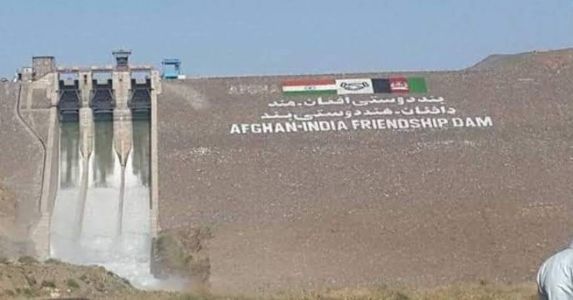Shahtoot dam a gift for Afghans from India
| 16-Feb-2021 |

Sant Kumar Sharma
Jammu, February 16:
When
India signed an agreement with Afghanistan some days ago for the
construction of Shahtoot dam over Kabul river, there was lot of
heartburn in Pakistan. The deal on the construction was signed by the
foreign minister S Jaishankar with his Afghan counterpart. This was done
in presence of Afghanistan President Ashraf Ghani and Prime Minister
Narendra Modi.
Pakistanis
simply cannot accept it gracefully that this will help provide drinking
water to 20 lakh Afghans. For past many years, this project was being
discussed, in the Indian, Afghan and Pakistani media. Most reports
emanating from Pakistan invariably talked in terms of the dam affecting
flows into Indus river as Kabul river meets the former at Attock.
Now
that construction of Shahtoot has been firmed up, Pakistan commentators
are likely to whip up more negative publicity about India. Not that it
should dent the Indian resolve to help the Afghans. Carry on regardless
(of what Pakistan says) is what India needs to do in most spheres,
extending help to Afghanistan included.
It
is worth mentioning here that Kabul, the Afghanistan capital, is a city
planned for barely one million (10 lakh) people. However, currently
over five million (50 lakh) people jostle for space here. Shahtoot
project, if allowed to be completed by Pakistan, can be of tremendous
help to the Afghans.
The
plain and simple fact is that Pakistan doesn't want any projects to be
built in Afghanistan. This ensures that the entire discharge of the
Kabul river flows into its territory unimpeded. Its water experts had
talked of joint development of the Kabul River Basin (KBR) two decades
back. Even earlier but beyond lip service, Pakistan did nothing to
actually harness the nature's gift for mutual benefit.
Keeping
Afghanistan unstable so that there is little, or no development there
suits Pakistan's interests. This is a policy which it has pursued for
the past half century and beyond saying goody goody things, it did
nothing to help Afghans. Some decades ago, when it had some money in its
coffers, Pakistan preferred to join the arms race with
India.
Rather
than build dams, small and big, on the rivers that flowed in its
territory, building atomic bombs was a higher priority. So, apart from
whatever water development happened in Pakistan as part of Indus Waters
Treaty (IWT) with India, signed in September 1960, it invested
negligible percentage of its own resources in this sector. The results
of this profligacy will be there to haunt it in the very near future.
Pakistan
is in dire economic duress now and has no money to spare for working on
any joint infrastructure projects with Afghanistan. Even if it wanted
to change the way it has dealt with Kabul so far. As for Afghanistan,
the war ravaged nation is practically living on international doles
nowadays. The help from India is more than welcome as the Shahtoot
project promises to fulfill a basic need of drinking water.
Just
like the vaccine diplomacy it has been pursuing with its neighbours,
and friends, the building of Shahtoot project is an Indian masterstroke.
A vast section of the Afghans wants fast completion of Shahtoot
project so that their drinking water needs are met. The power generation
by this project is an added bonus. In fact, inking this project has
given them hope that more dams, at least a dozen more, can be built with
help from India.
Most
Pakistani commentators say India is helping Afghans to spite them but
it remains a fact that their country has no water sharing agreement with
Afghanistan. Nor are any serious talks underway between Afghanistan and
Pakistan government regarding joint water development.
With
very few dams in Afghanistan, over 75 per cent of water of rivers that
originate in its territory ends up flowing into the neighbouring
countries. Except Tajikistan, all its neighbours like Uzbekistan,
Turkmenistan, Iran and Pakistan are deficient in water. These
deficiencies can largely be attributed to inefficient management of most
rivers.
Presently,
the annual per capita availability of water in India is approximately
1,500 cubic metres while in Pakistan, the figure is just 1,000 cubic
metres and going down further. One of the basic reasons for this is
rapid increase in population of Pakistan. Other contributory factors are
seepage, water wastage and lack of coordinated strategy for water
conservation. Instead of looking within, and sorting out its own mess,
Pakistan has always preferred to blame India for its water scarcity. The
trend is unlikely to die any day in the near future.